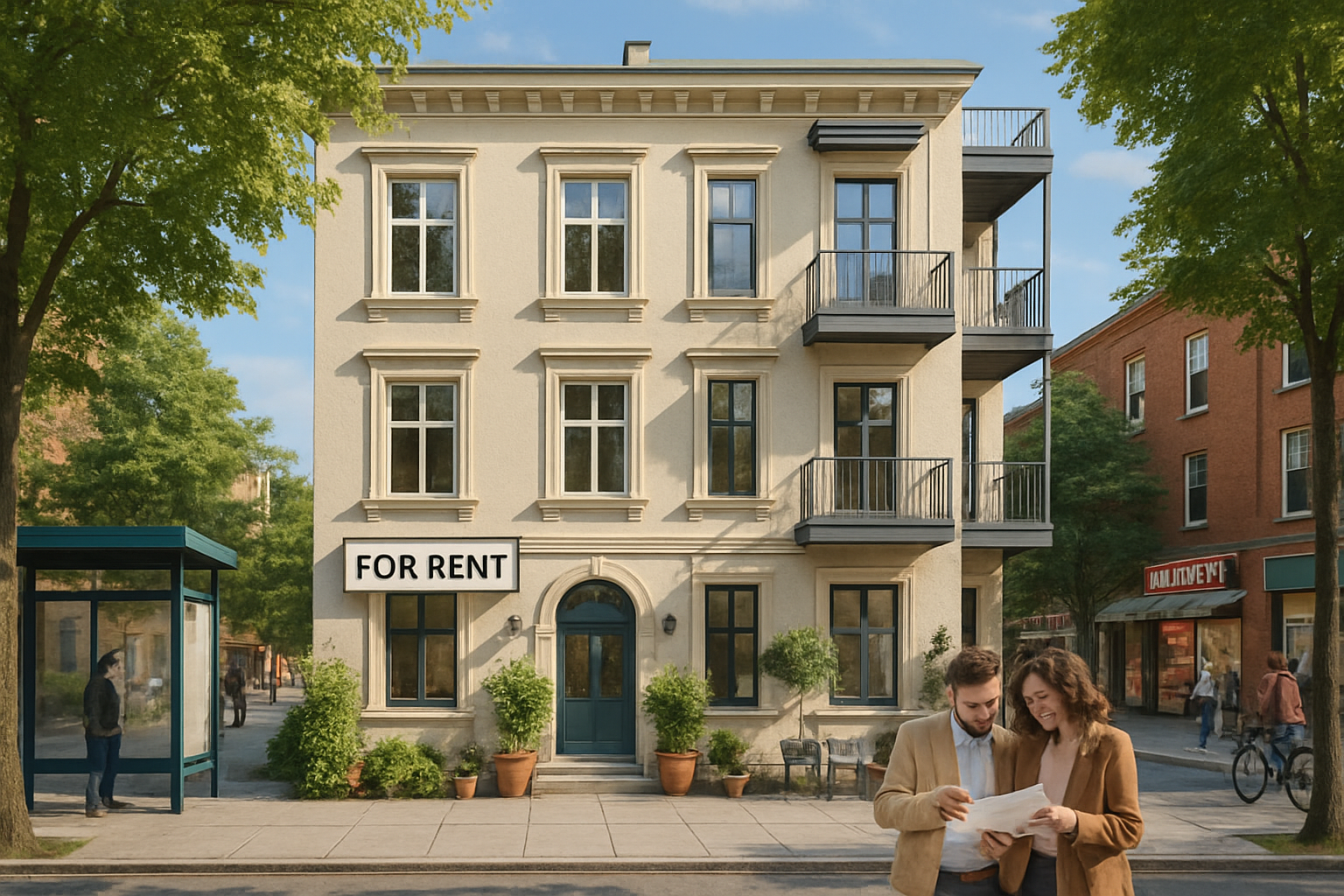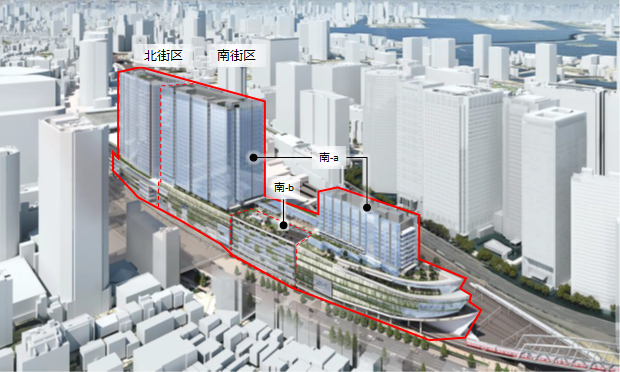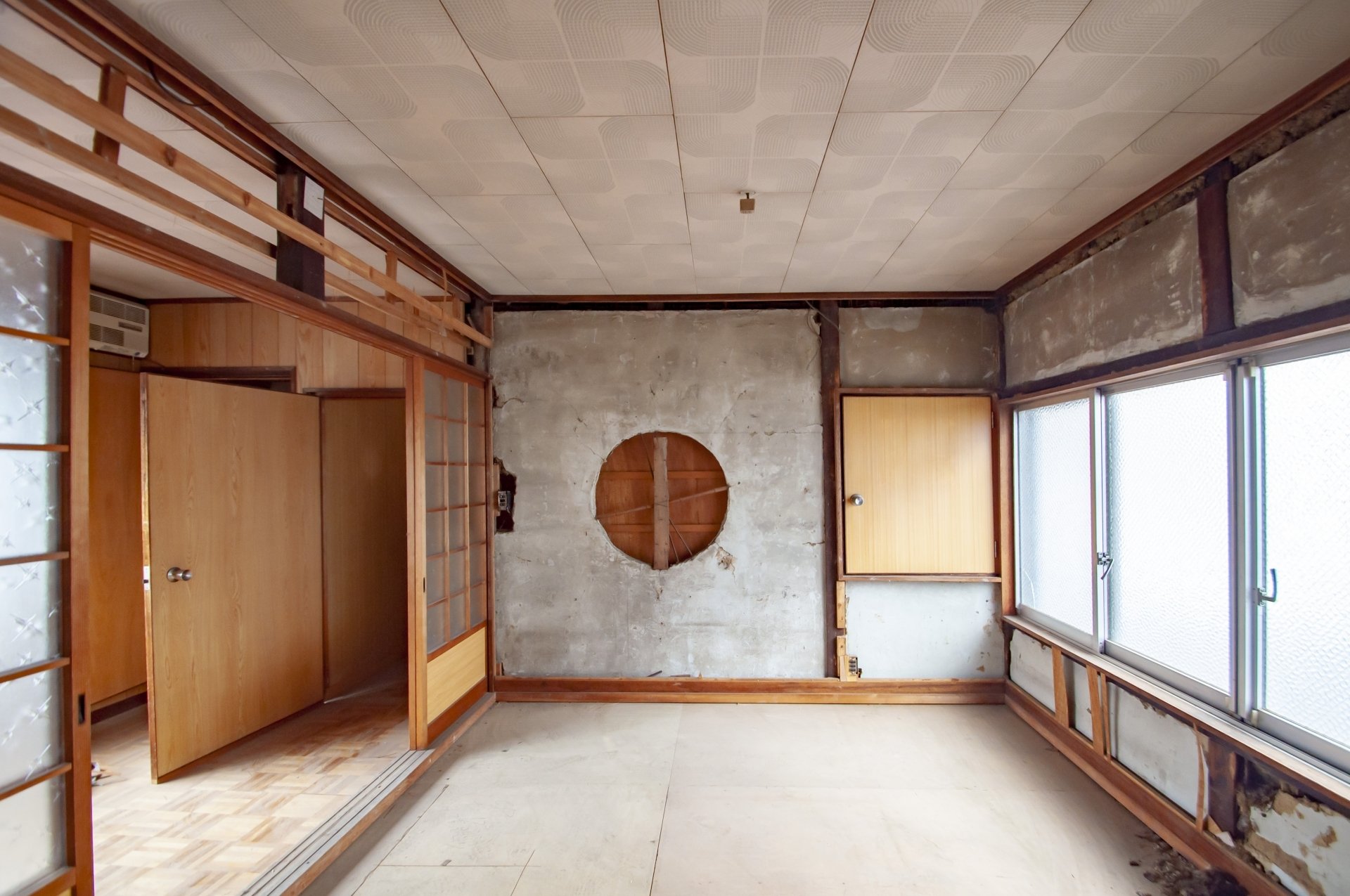When considering an investment in a studio apartment, you may have heard the term "sublease. While the term "sublease" is often introduced with attractive claims such as "rent is guaranteed" and "no need for management," there are also warnings such as "subleasing is dangerous" and "dangerous contracts.
In my many years in the real estate industry and in talking with many investors, I have seen many misconceptions and concerns about sublease contracts. While there are certainly points to be aware of, sublease contracts can be an effective option for investors if properly understood and utilized.
In this article, as an expert in real estate investment, we will explain in detail the structure of sublease contracts for studio condominium investment, their merits and demerits, and points to be aware of when signing the contract. We will provide information that will be useful for those who are considering investing in studio condominiums, as well as those who are already investing but are considering sublease contracts.
What is subleasing in studio apartment investment?
Basic Structure of Sublease
In a sublease contract, a property owner leases the entire property to a sublease company (management company), which then subleases the property to tenants. This type of contract is also called a "sublease contract" or "sublease contract.
In the normal rental management, the owner directly concludes a lease contract with the tenant, but in a sublease contract, the following relationship is established.
1. Between the owner and the sublessor: Master lease contract (specific lease contract)
2. Between the sublessor and the tenant: Sublease contract (sublease contract)
Under this structure, the owner receives a fixed amount of rent from the sublessor company regardless of whether or not there are tenants. The sublessor company receives the rent paid by the tenant, and the owner receives the amount of the rent after deducting a commission.
Differences from Normal Management Contracts
A "management consignment contract" is often confused with a sublease contract. It is important to clearly understand the difference between the two.
| Item | Sublease Agreement | Management Consignment Contract |
|---|---|---|
| Parties to the Lease Agreement | Owner ⇔ Sublease Company | Owner ⇔ Tenant |
| Payment of rent | Sublease company → Owner | Tenant ⇔ Owner |
| Rent when vacancy | Guaranteed (depending on conditions) | No income |
| Management fee | Approx. 10-20% of rent |
Approx. 3-5% of rent |
| Difficulty of contract cancellation | Difficult (Land and House Lease Law applies) | Relatively easy |
In a management contract, the owner signs a contract directly with the tenant and outsources only the management of the property. In a sublease contract, on the other hand, the sublease company rents the property from the owner and becomes the actual lessor.
Tighter Regulations under the New Sublease Law
The "Law Concerning the Proper Management of Rental Housing" (commonly known as the "New Sublease Law"), which came into effect in December 2020, has made the sublease industry more transparent and proper. The law establishes the following regulations.
Main Regulations
Prohibition of exaggerated advert isements: Prohibition of advertisements that make conditions appear more favorable than they actually are.
Prohibition of unfair solicitation: Prohibition of misrepresentation and intentional misrepresentation of important matters.
3. Obligation to explain important matters: Obligation to provide written documents and oral explanations before concluding a contract
4. Obligation to deliver contract documents: Delivery of detailed documents at the time of conclusion of a contract
5. Obligation to inspect documents: Provision of inspection of documents upon request from the owner.
It is expected that these regulations will improve the problems of exaggerated advertisements such as "30-year rent guarantee" and insufficient explanation of the risk of rent reduction, which have been problems in the past.
Legal Nature of Master Lease Contracts
A master lease agreement between an owner and a sublessor company in a sublease contract is legally a lease agreement governed by the "Land and House Lease Law. This point creates a unique aspect of sublease contracts.
The Land and House Lease Law strongly protects the rights of the lessee (in this case, the sublessor company), and unilateral cancellation of the contract by the lessor (owner) is not allowed in principle. This is one of the factors that make it difficult for the owner to cancel the contract.
In addition, Article 32 of the Land and House Lease Law grants the sublessor the right to demand a rent reduction for reasons such as changes in economic conditions. This is the reason why the rent may actually be reduced even though it is claimed to be "rent guaranteed.
Five Advantages of Choosing Sublease for One-Room Condominium Investment
While there are certainly risks associated with sublease agreements, if utilized properly, they can bring significant benefits to investors. Here we detail the major advantages of sublease contracts for studio condominium investment.
1. Substantial Reduction of Vacancy Risk
One of the biggest concerns when investing in studio apartments is vacancy risk. Particularly in properties for singles, tenants change frequently, resulting in zero rental income during the vacancy period.
In a sublease contract, the sublease company leases the property outright, so the owner receives a fixed rent regardless of the actual occupancy status. This provides the following peace of mind
Specific Effects of Vacancy Risk Reduction
Continued income during the vacancy period after tenants move out
Stable income that is less susceptible to the effects of busy and quiet periods
Stable income that is less susceptible to fluctuations in local rental demand
Easier long-term income/expense planning
However, it should be understood that this "rent guarantee" is not permanent and may be subject to review due to changes in contract terms and market conditions.
2. Securing Stable Rental Income
The sublease contract allows the owner to receive a fixed amount of monthly rental income. This stability is a major advantage, especially for investors who
Investors who can enjoy the benefits of stable income
Those who are new to real estate investment and wish to avoid income fluctuations
Those who want to stabilize their portfolio by combining it with other investments.
Those who want to use it as a stable source of income after retirement.
Those who want to make loan repayment plans from financial institutions easier.
Even if actual market rent fluctuates, you can receive the promised rent for the duration of the contract, making it easier to predict your cash flow. This is especially important for those who are investing by utilizing financing.
3. Complete freedom from rental management operations
In normal rental management, the owner needs to be involved in the following management tasks.
Management tasks that occur in normal rental management
Tenant recruitment and screening
Conclusion of lease contracts
Collecting rent and reminding tenants
Handling complaints from tenants
Attending to tenants when they move out and restoring the property to its original condition
Arranging for repairs and replacement of equipment and facilities
Under a sublease contract, all of these tasks are transferred to the sublease company. The owner can receive rental income in a form that is virtually "unearned income," allowing the owner to concentrate on his/her core business.
The effect of reducing the burden of management operations is especially significant when the owner owns properties in remote areas or owns multiple properties.
4. Complete avoidance of rent delinquency risk
With direct contracts with individual tenants, there is always the risk of rent delinquency. In the event of nonpayment, the owner is forced to take the following actions
Handling operations in the event of rent arrears
Contact and negotiate with the tenant
Contact the guarantor
Consideration and execution of legal procedures
Filing a lawsuit for surrender
Filing a petition for compulsory execution
These procedures are time-consuming, costly, and emotionally taxing. In a sublease contract, the sublessor company assumes the obligation to pay rent to the owner, thus completely avoiding the risk of tenant nonpayment.
5. Significantly simplified tax return processing
Tax returns for real estate income require detailed records of income and expenses. The following complicated process is required for ordinary rental management.
Tax return filing for ordinary rental management
Monthly record of rental income
Processing of one-time income such as key money, renewal fees, etc.
Classification of expenses such as management fees, repair expenses, etc.
Calculation of depreciation
Adjustment of income during vacancy periods
Under a sublease agreement, the tax return filing process is greatly simplified because only payments from the sublessor company need be recorded. In addition, many sublessors will issue an annual payment record, making tax processing easier.
| Item | Normal rental management | Sublease Agreement |
|---|---|---|
| Type of income | Rent, key money, renewal fees, etc. | Sublease fees only |
| Income fluctuation | Fluctuates from month to month | Fixed amount each month |
| Treatment of expenses | Requires detailed classification | Relatively simple |
| Documents required | Numerous receipts, etc. | Payment records, etc. |
| Complexity of declaration | High | Low |
These advantages make sublease contracts an attractive option, especially for real estate investment beginners and investors who do not have the time to devote to administrative tasks. However, it is also important to understand that in exchange for these advantages, there are some risks and restrictions.
Five risks that make subleasing a studio condominium investment "bad
One of the reasons why sublease contracts are often referred to as "risky" or "dangerous" is that there have been many cases in which investors have entered into contracts without fully understanding them, which has led to problems later on. In this section, we will explain in detail the major risks of sublease contracts and clarify why caution is necessary.
1. The sublessor has the right to decide whether to continue or terminate the contract.
One of the biggest risks in sublease contracts is the issue of contract continuity. Many investors misunderstand that a claim such as "30-year rent guarantee" is understood to mean that the contract will absolutely continue for 30 years.
Reality Regarding Contract Termination
The Land and House Lease Law makes it relatively easy for the sublessor (lessee) to terminate the contract. On the other hand, it is practically difficult for the owner (lessor) to terminate the contract because "just cause" is required.
The main reasons for a sublessor to request cancellation of the contract are as follows
Decrease in rental demand in the surrounding area
Decline in competitiveness due to aging of the property
Change in business policy of the sublessor
Deterioration in profitability
Actual Trouble Cases
The following cases were reported to the Consumer Affairs Agency.
The sublessor company unilaterally terminated the contract in the third year after concluding a 10-year rent guarantee contract. I had to find new tenants on my own, and my anticipated income/expense plan went drastically awry."
In order to avoid such a situation, it is important to check the termination clause in the contract in detail and understand in advance under what circumstances the contract may be terminated.
2. Right to determine rent and risk of rent reduction
The term "rent guarantee" tends to lead many investors to believe that the rent is fixed for the duration of the contract. In reality, however, Article 32 of the Land and House Lease Law gives sublessors the right to demand a rent reduction.
Legal Basis for Rent Reduction
Article 32 of the Land and House Lease Law allows a sublessor to demand a rent reduction for the following reasons
1. Decline in the price of the land or building
Comparison with rents of similar buildings in the neighborhood
3. Change in economic circumstances
4. Other changes in circumstances
Actual Situation of Rent Reduction
In actual sublease contracts, rent reductions are often made at the following times.
| Timing of rent reduction | Reason for rent reduction | Approximate range of rent reduction |
|---|---|---|
| At the time of contract renewal (every 2 years) | Decline in market rent | 5-15% (after major repairs) |
| After major repairs | Vacancy during construction period | 10-20% (every 2 years) |
| When building age elapses | Decline in competitiveness of property | 10-25% of total vacancies |
| When economic conditions change | Decrease in local demand | 15-30% (in the case of a decrease in demand) |
Reality of Negotiating Reductions
Although it is theoretically possible for an owner to refuse a sublessor's request for a reduction in rent, in practice, owners are often forced to accept such a request for the following reasons
In many cases, owners have no choice but to accept the demand for the following reasons: ・Time and cost burden in case of legal disputes.
Risk of termination of the contract by the sublessor
Difficulty in finding an alternative management company
Difficulty in finding an alternative management company ・Reality of the gap between the rent and the market rent
3. Burden Structure of Repair and Renovation Costs
Under a sublease contract, the owner retains ownership of the property, so in principle, the owner bears the cost of major repairs and facility upgrades. In this regard, there is a risk of unexpected expenses.
Major expenses to be borne by the owner
Large-scale repair costs: painting of exterior walls, waterproofing of rooftops, renewal of water supply and drainage equipment, etc.
Equipment replacement costs: replacement of air conditioners, water heaters, intercoms, etc.
Restoration costs: Cleaning and interior repairs when vacating.
Remodeling costs: Upgrading facilities to maintain competitiveness
Problems with Cost Burdens
The following problems may occur in sublease contracts.
1. Insufficient transparency of repair costs: Costs are relatively high due to the requirement that the work be done by a contractor designated by the sublessor company
2. Excessive repair demands: Unnecessary repairs are demanded for reasons of maintaining market competitiveness
3. Subsequent approval for urgent repairs: High charges due to subsequent approval on the grounds of urgency.
Example of Actual Cost Burden
The following is an actual example of annual repair costs for a 10-year-old studio apartment.
| Repair items | Frequency | Approximate cost | Annual cost |
|---|---|---|---|
| Air conditioner replacement | 8-10 years | 150,000 yen | 1.5-19,000 yen |
| Water heater replacement | 10-12 years | 120,000 yen | 10,000-12,000 yen |
| Room cleaning | Every time you move out | 50,000 yen | 10,000-25,000 yen |
| Equipment repair | As needed | 30,000 yen per year | 30,000 yen |
| Total | -30,000 yen | - - - - - - - - - - - - - - - - - Total | 6.5-86,000 yen |
4. Loss of key money, renewal fees, and other income opportunities
In a normal rental management, income such as key money and renewal fees can be earned in addition to rent. However, in a sublease contract, these revenues become the income of the sublessor company and cannot be received by the owner.
Types and Amounts of Lost Income
| Income Item | Normal amount | Frequency of Occurrence | Impact on annual income |
|---|---|---|---|
| Key money | 1-2 months rent | When moving in | 10-20% of rent |
| Renewal Fee | 1 month rent | Every 2 years | 6% of rent |
| Key replacement fee | 15,000-20,000 yen | When moving in | 20,000-50,000 yen per year |
Impact of Loss of Income Opportunity
For example, a studio apartment with a monthly rent of 80,000 yen will lose the following income opportunities per year
Key money income: approx. 80,000-160,000 yen per year (assuming 50% occupancy)
Renewal fee income: approx. 48,000 yen per year
Total: approximately 128,000-208,000 yen per year in lost income opportunities.
This amount is often equivalent to 15-25% of the sublease fee, and has a significant impact on real profitability.
5. Income Blanket due to Exemption Period
Many sublease agreements include an "indemnity period. This is the period during which the sublessor company does not pay rent to the owner for a certain period of time after the tenant moves out or after the new property is delivered.
Examples of exemption periods
New construction: 1-3 months after delivery
After the owner moves out: 1-2 months from the date the owner moves out.
After major repairs: 1 month after completion of construction
Problems with the Exemption Period
During the indemnity period, the following burdens continue to fall on the owner
1. Loan repayment: Repayment to the financial institution continues.
2. Management fees and reserve for repairs: Management fees and other expenses for the condominium continue.
Property taxes: Tax payments will continue.
4 . Fire insurance premiums: Insurance premiums continue to be paid.
Impact on Income and Expenses during the Exemption Period
In the case of a property with monthly loan repayment of 70,000 yen and management fee of 20,000 yen, 180,000 yen will be taken out for 2 months of the exemption period. When considered over the course of a year, this exemption period is a factor that can have a significant impact on the return on investment.
Signing a sublease contract without understanding these risks is the main reason why people say that subleasing is a bad idea. However, by fully understanding these risks and taking appropriate measures, it is possible to make effective use of sublease contracts.
Points to keep in mind to avoid making mistakes in sublease contracts
If you understand the risks of sublease contracts and still consider signing one, it is important to be sure to confirm the following precautions. As a real estate investment expert, here are some important points that we have shared with many investors.
Confirm the details of the contract
Sublease contracts are usually dozens of pages long and detailed. Before signing the contract, be sure to confirm the following items.
List of Important Items to Check
| Confirmation Items | Points to be confirmed | Contents to be noted |
|---|---|---|
| Contract period | Actual warranty period | Actual condition of "30-year warranty |
| Rent Revision Clause | Revision Period and Conditions | Possibility and Range of Reduction |
| Termination Clause | Reasons and Procedures for Termination | Conditions for Unilateral Termination |
| Exemption Period | Duration and Applicable Conditions | Length of Income Blank Period |
| Burden of Repair | Expense Burden Coverage | Limit of owner's burden |
| Restoration to original condition | Burden when vacating | Existence or non-existence of covenants |
Points to note when confirming the contract
1. Confirmation by a specialist: Since many parts of the contract require legal expertise, it is recommended that you ask a lawyer or judicial scrivener who is familiar with real estate to confirm the contents of the contract.
2. Recording of explanation of important matters: The new sublease law makes explanation of important matters obligatory, but it is effective to record the content of the explanation to prevent problems at a later date.
3. Prepare questions in advance: Make a list of questions before signing the contract, and resolve all of them before signing the contract.
Confirmation of the sublessor's reliability
In a sublease contract, the reliability of the sublessor company with whom you are signing the contract is extremely important. Make a comprehensive evaluation from the following perspectives.
Confirmation of financial condition
Disclosure of financial statements: For listed companies, check the annual securities report; for non-listed companies, check the public notice of financial statements.
Equity ratio: 30% or more is desirable.
Sales: Check the growth potential of the company over the past three years.
Borrowings: Check for excessive dependence on borrowings
Confirmation of business performance
Number of units under management: Check if the company has a track record of managing units of a certain size or larger.
Number of years in business: At least 5 years of continuous business experience
Trouble history: Any lawsuits or administrative penalties in the past?
Reputation in the industry: evaluation by other companies in the same industry or industry associations
Confirmation of Registration and Permit
Please confirm whether the company is registered or licensed under the New Sublease Law.
Rental Housing Management Agency Registration: Registered with the Ministry of Land, Infrastructure, Transport and Tourism
Licensed by the prefectural governor or the Minister of Land, Infrastructure, Transport and Tourism
Membership in industry associations: Membership in the National Association of Property Managers for Leasing, etc.
Consideration of a long-term income/expense plan
When considering a sublease contract, it is important to plan not only short-term income and expenditures, but also long-term income and expenditures.
Creating an Income/Expenditure Simulation
Prepare a detailed simulation that takes the following factors into account
1. Assumption of rent reduction: Assume a 5-10% reduction in rent every 5 years.
Reserve for repairs: Reserve 10-15% of annual rental income for repairs.
Impact of exemption period: Assume 1-2 months exemption period per year.
Inflation impact: Consider the ability of rents to keep pace with rising prices.
Conduct comparative study
By comparing sublease contracts with other management methods, you can find the best option.
| Management Method | Initial Rate of Return | Rate of return after 10 years | Management Burden | Risk |
|---|---|---|---|---|
| Self-management | High | Medium | Large | High |
| Outsourced Management | Medium | Medium | Small | Medium |
| Sublease | Low | Low | Min. | Low |
Post-Contract Monitoring System
It is important to conduct periodic monitoring even after the sublease contract is signed.
Periodic check items
Rent payment status: Are there any signs of delay or reduction in rent?
Property maintenance status: Is the property being properly managed?
Comparison with market rent: Is the sublease rent significantly different from the market level?
Management of the sublessor: Are there any changes in the sublessor 's financial condition?
Preparation for response in case of trouble
The following preparations are recommended in the event that a problem arises.
Liaison with specialists: Have a liaison system in place with lawyers and real estate consultants.
∙ Potential alternative management companies: alternative plans in case the sublease contract is terminated
∙ Secure emergency funds: Secure funds to cover indemnity period and repair costs.
By considering sublease contracts with these precautions in mind, it is possible to minimize risk while reaping the benefits. The key is to fully understand the details of the contract and make decisions from a long-term perspective.
Conclusion
Sublease contracts in studio apartment investment can be an effective option for investors if properly understood and utilized. However, there are certain reasons why it is a "bad idea," so careful consideration is necessary.
Summary of the main points of sublease contracts
Advantages
Stable income by reducing vacancy risk
Freedom from management duties
Avoidance of rent delinquency risk
Simplification of tax return work
Major Risks
The sublessor has the right to terminate the contract.
Possibility of rent reduction
Burden of repair costs
Loss of key money and renewal fee income
Income void due to indemnity period
Investment Decision Points
When considering a sublease contract, make a comprehensive decision from the following perspectives.
1. Clarify investment objectives: Clarify whether the emphasis is on stability or profitability.
2. Confirm your risk tolerance: How much management and vacancy risk can you tolerate?
3. Long-term perspective: Plan for income and expenditures 10 to 20 years down the road.
4 . Comparison with alternatives: Detailed comparisons with other management methods
Next Action
In order to make a successful investment in a studio apartment, it is important to take a comprehensive approach that includes not only consideration of sublease contracts, but also the following
Importance of property selection: Careful consideration of location, age of building, and grade of facilities
∙ Financial planning: appropriate planning for down payment, loan terms, and operating funds
Consideration of tax planning: Optimization of depreciation and expense accounting
Consideration of exit strategies: Advance consideration of timing and terms of sale
A long-term perspective is important in real estate investment. The key to success is to build a sustainable investment strategy without being distracted by short-term gains.
Frequently Asked Questions
Q1. Can I cancel a sublease contract in the middle of the lease term?
A1. Cancellation of a sublease contract is determined by the terms of the contract. Generally, cancellation by the owner requires "just cause" and is limited to the following cases.
Sublease company's nonpayment of rent
Continuous breach of contract
Necessity of reconstruction or major repair of the property
However, it should be understood that actual termination often requires legal proceedings, which can be time-consuming and costly. It is recommended that you confirm the termination clause in detail before signing the contract and consult with a specialist if necessary.
Q2. What happens if the sublessor goes bankrupt?
A2. If a sublessor company goes bankrupt, the following situations may occur
Relationship with tenants
The lease contract with the tenant continues (protected by the Land and House Lease Law).
The owner succeeds to the rights and obligations as the direct lessor
The owner transfers the obligation to return the security deposit and guarantee money to the tenant
Impact on the owner
Payment of sublease rent will be suspended.
Owner must either manage the property himself/herself or find a new management company.
Owner acquires the right to receive rent directly from tenants
To mitigate this risk, it is important to regularly check the financial condition of the sublessor company and select a reliable company.
Q3. Which is recommended, subleasing or outsourced management?
A3. Which is more suitable depends on the investor's situation and objectives.
When is subleasing suitable?
Beginners in real estate investment who are not comfortable with management.
Are too busy with their main job to devote time to management.
・I value stable income and can tolerate a slight decline in profitability.
Owns a property in a remote area
When outsourced management is suitable for you
Have experience in real estate investment
Want to focus on profitability
Want to know how the property is being managed
Want to secure income from key money, renewal fees, etc.
Generally speaking, outsourced management is suitable when profitability is important, and subleasing is suitable when stability is important.
Q4. What is the rent guarantee rate for sublease contracts?
A4. Generally, the rent guarantee rate for sublease contracts is set at 80-90% of the market rent.
Factors that determine the guarantee rate
Location of the property
Age of the building and grade of equipment
Rental demand in the area
Business policy of the sublessor
Fluctuation of Guarantee Rate
Often reviewed at the time of contract renewal
May be reduced due to changes in market conditions
May be reduced due to changes in market conditions ・Phased reductions as the competitiveness of the property declines
What is important is to understand not only the initial guarantee rate, but also the possibility of long-term fluctuation.
Q5. What are the characteristics of properties suitable for sublease contracts?
A5. Properties suitable for sublease contracts have the following characteristics
Location
Conveniently located within a 10-minute walk from a station.
・Areas with stable demand from singles
・Areas with future development plans
Property conditions
Newly built or properly maintained property
Properties with standard facilities
Condominiums with good management conditions
Investment conditions
The purchase price is appropriate.
Sufficient capital on hand
Investment based on the premise of long-term ownership
Conversely, for older properties or those in poor locations, sublease companies may shy away from signing contracts, or the guarantee rate may drop significantly.

Daisuke Inazawa
Representative Director of INA&Associates Inc. Based in Osaka, Tokyo, and Kanagawa, he is engaged in real estate sales, leasing, and management. He provides services based on his extensive experience in the real estate industry. Based on the philosophy that “human resources are a company's most important asset,” he places great importance on human resource development. He continues to take on the challenge of creating sustainable corporate value.

.png)













